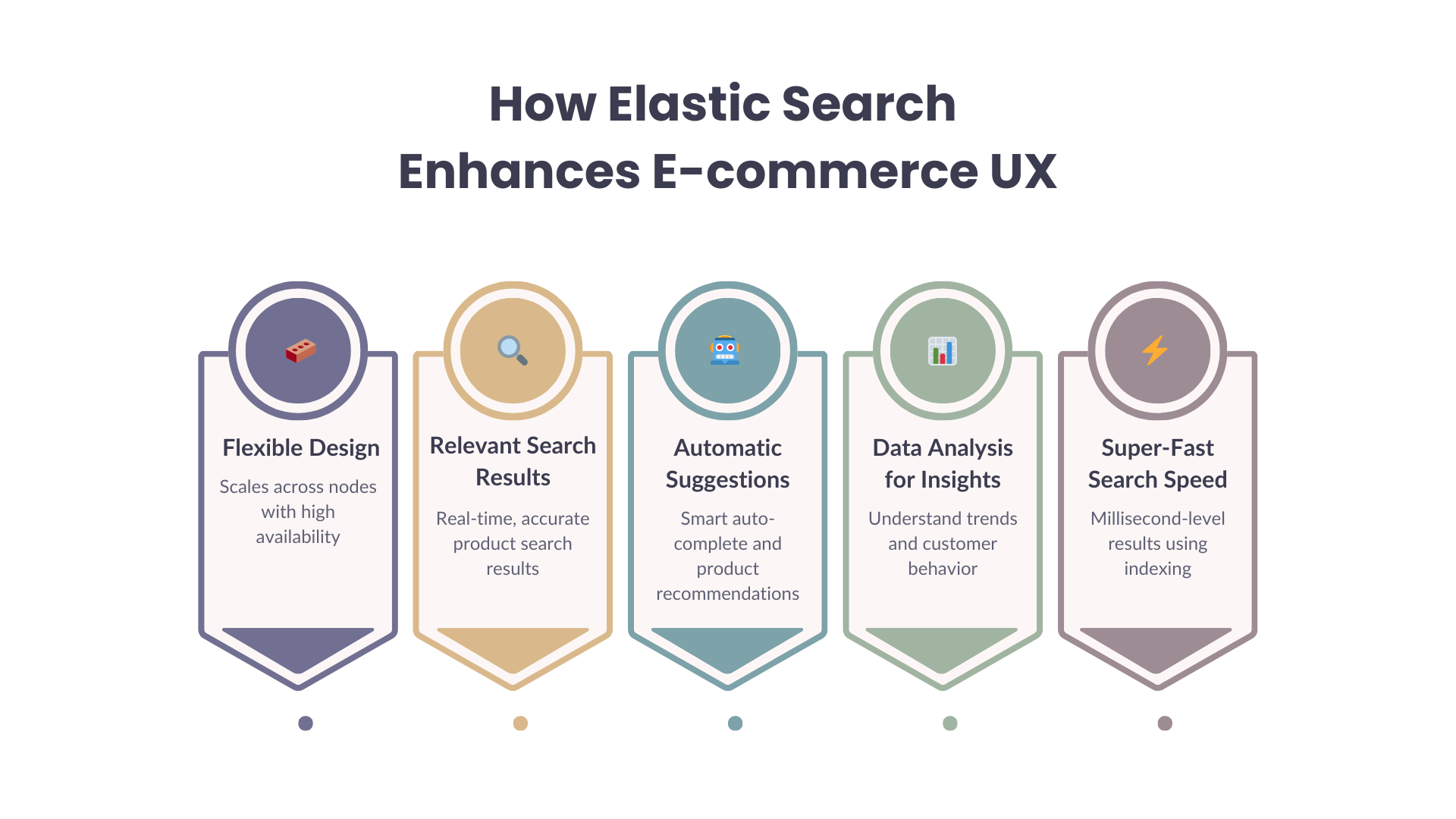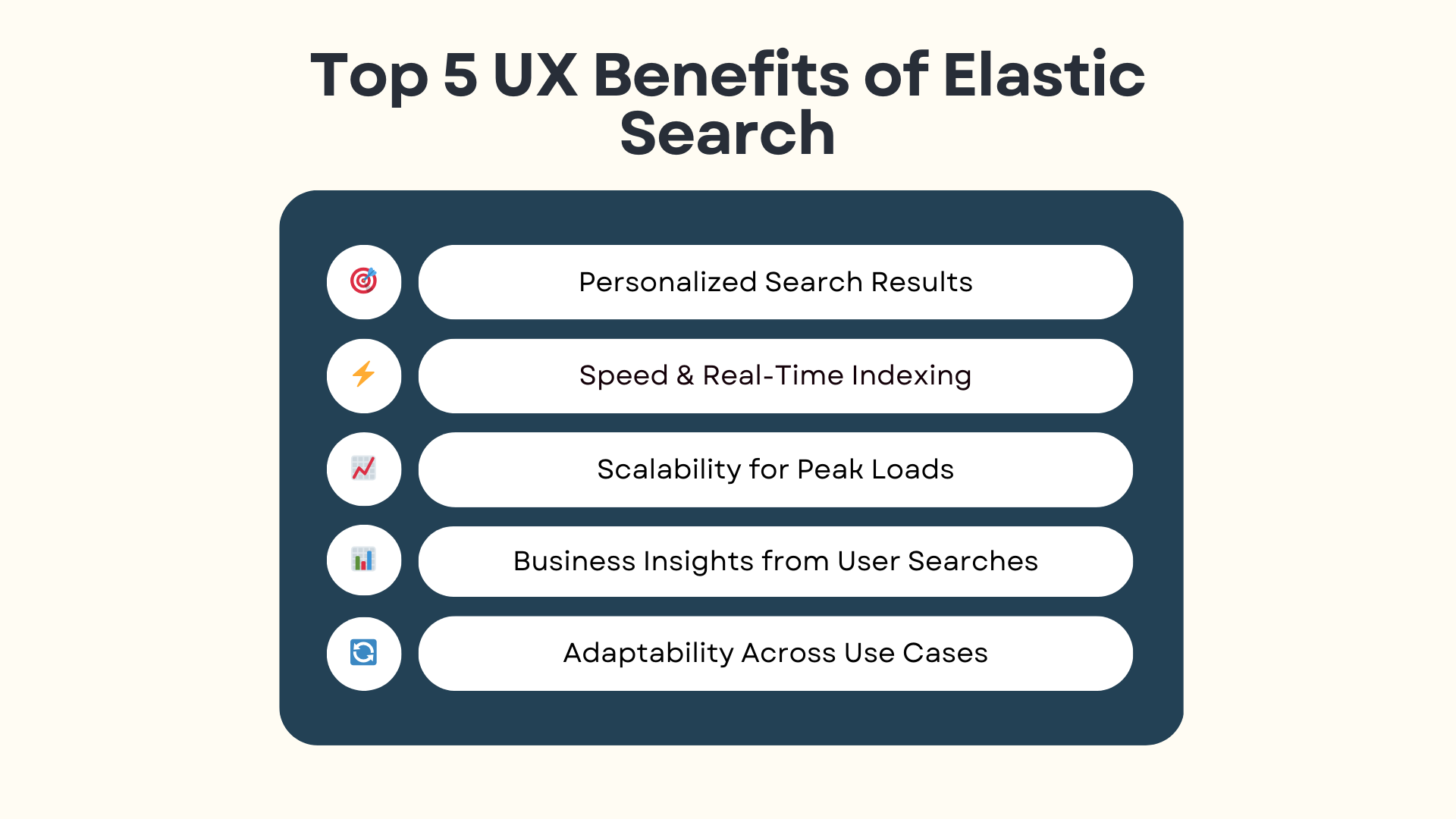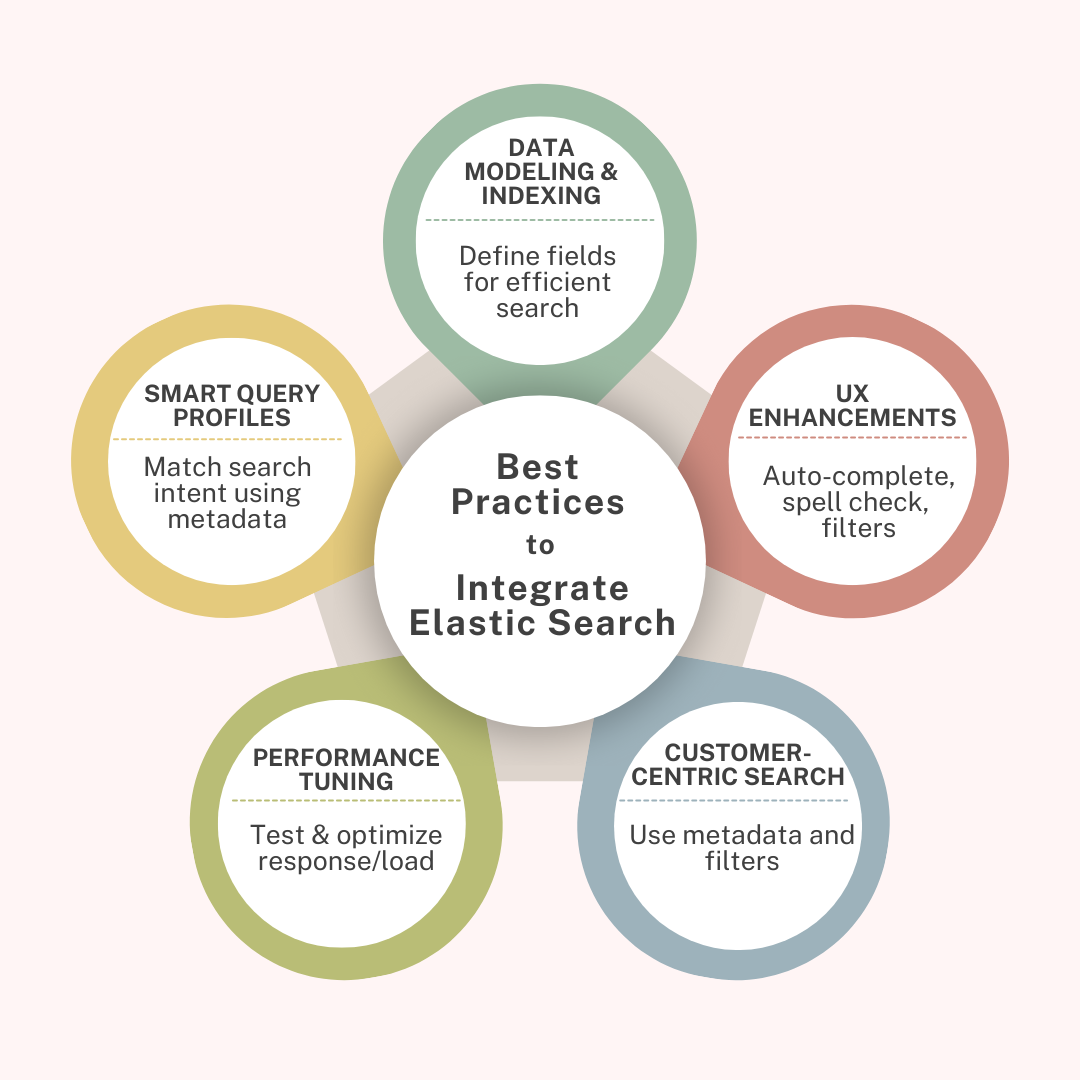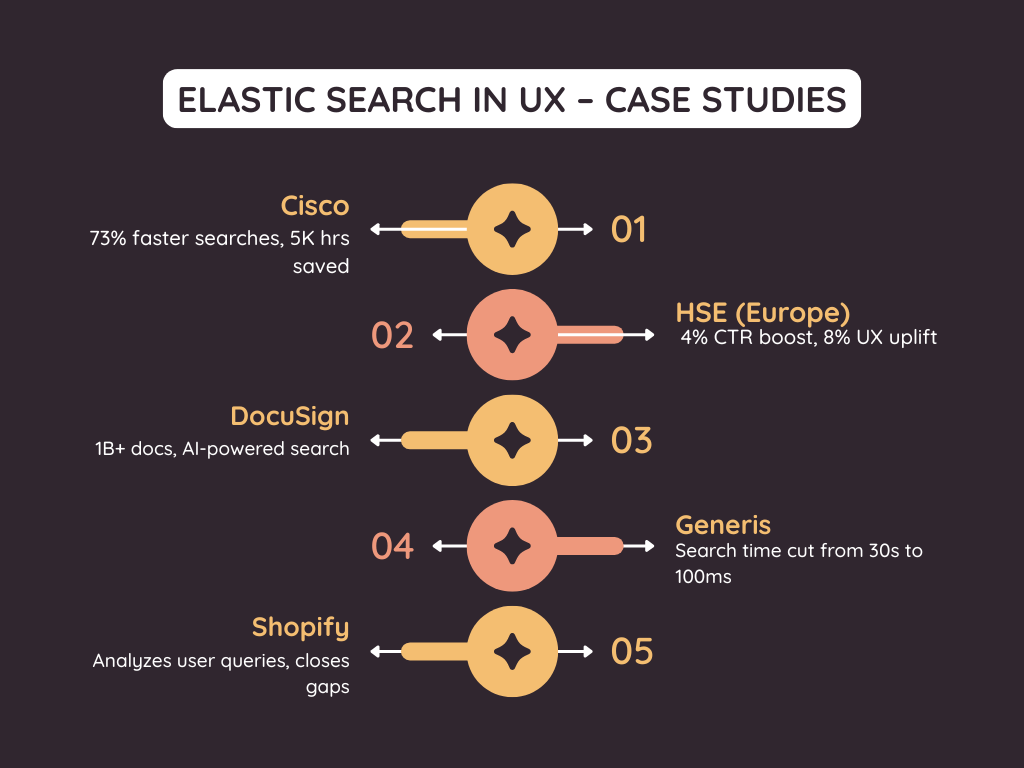What Is Platform Modernization? Future-Proofing Ecommerce Success


It’s no surprise that companies go out of their way to delight their customers with a personalized user experience. One such way is to personalize their search relevance.
To stay ahead of their competition, e-commerce brands are constantly innovating to make search results more relevant and personalized for their online shoppers. Modern consumers expect “zero friction” when searching for a product on e-commerce stores.
Elastic Search facilitates e-commerce retailers to improve their search relevance by providing personalized responses. From its performance benchmark, Elastic Search outperforms the traditional OpenSearch by 40% to 140%, while utilizing fewer computing resources.
Is Elastic Search the new frontier in delivering exceptional customer experience in the e-commerce sector? Let’s find out.
As a technology, this powerful search and analytics tool can improve product searches and data analysis in the e-commerce domain. With its flexible architecture, Elastic Search facilitates real-time data analysis, thereby allowing e-commerce systems to process vast volumes of data – including product catalogs and customer data.
By implementing Elastic Search as a search analytics engine for faster product searches, e-commerce brands can now deliver customer-engaging capabilities like speed, personalization, and scalability.
To increase their online sales, e-commerce sites need a search engine that can display the products most relevant to their customers. This ensures the shortest search time and effort for online shoppers searching for any particular product. Thus, personalized search relevance is crucial for designing the search function in any e-commerce store.
Essentially, with Elastic Search, e-commerce companies can now organize their data into JSON-based documents with each entity representing a unit of information. Similar to database systems, multiple documents are grouped into indices. Using inverted indices, the data structure can now map each word to its document location, hence improving its search efficiency.

Here’s how Elastic Search works for e-commerce brands:
With Elastic Search, e-commerce sites can manage and scale massive volumes of information across multiple hubs. Its flexible design ensures high availability and fault tolerance for large-scale e-commerce operations, thus delivering user experience or UX optimization at all times.
E-commerce companies can deliver an optimized user experience by using Elastic Search technology. It provides real-time instant responses to search queries posted by customers looking for a quick buy.
Elastic Search can make the search experience better using features such as auto-completion and auto-suggestion. Similarly, this technology makes it easier to recommend similar products – based on product category and previous searches, thus further improving customer engagement.
Besides improving UX, Elastic Search can analyze product-related Big Data, thus helping them understand customer behavior and industry trends.
Apart from providing relevant search results, Elastic Search makes product search super-fast, which is critical in the e-commerce domain. This is possible with the use of inverted indices and real-time indexing, thus ensuring that any user query returns results in a matter of milliseconds.
How do e-commerce companies benefit from deploying Elastic search technology? Let’s discuss in the next section.
In the e-commerce industry, Elastic Search primarily enhances the user’s search experience, in addition to providing data-driven insights to business owners. Here are some of the main benefits of using this technology to improve the user experience:

With personalized search results, e-commerce brands can reduce friction with their customers and provide them with a seamless UX. In response to user searches, e-commerce shops can display the most relevant products – along with the store location (in the case of store pickups). Besides, companies can link search results to the customer’s profile and location.
By leveraging its open, flexible APIs, e-commerce companies can use Elastic Search technology for fast indexing, which helps in presenting real-time product availability. With APIs, they can provide real-time inventory data for various stakeholders, as well as analyze industry trends. This enables companies to deliver real-time search capabilities to customers, thus allowing them to find relevant products based on keywords and other filters.
With Elastic Search technology, e-commerce companies can now build a scalable infrastructure that ensures high availability and performance at all times. By using automatic scaling, online brands can quickly adapt to seasonal spikes and festive shopping. Elastic Search’s distributed architecture is also designed to manage massive volumes of product catalogs and incoming traffic – without any performance drop.
With Elastic Search technology, e-commerce brands can now extract valuable insights from their customers’ online searches. By using behavioral analytics and data visualization, they can easily analyze customer behavior for UX optimization and improved product positioning. They can also convert these insights into actions to improve their sales revenues.
As the name suggests, Elastic Search technology can help in building adaptable business models for e-commerce companies. With its building blocks, they can create customized solutions to address their unique business requirements. Further, in-built integration tools enable them to search, store, and analyze data from any data source. Companies can also build community tools to be shared and used by other users and teams.
How can e-commerce companies integrate Elastic Search in their operations? Let’s look at some best practices.
As discussed in the previous section, e-commerce companies can improve their search experience by implementing Elastic Search technology. That said, they need time to integrate this technology, depending on the size and complexity of their e-commerce system.

Here are some of the best integration practices that can help them achieve business success:
Effective data modeling and indexing are among the best practices for a successful Elastic Search implementation. This requires companies to define the data fields for indexing – like product names, product categories, and prices. This practice is crucial for improving the search performance.
Through bulk indexing, they can lower their overhead costs and improve their indexing speed (in the case of massive product catalogs). Further, e-commerce companies must optimize their refresh interval for real-time data ingestion. A shorter interval can deliver real-time product updates, but also lead to higher resource consumption.
Among the effective practices, e-commerce companies can improve UX by providing users with real-time search capabilities such as auto-complete. Features like automatic spell corrections can help customers navigate to their target product with minimum effort. Additionally, by integrating search results with customer profiles, customers can receive personalized recommendations on their next product search.
UX optimization can also deliver faster search results, which helps in improving user engagement and search engine rankings.
As a best practice, e-commerce brands must include metadata with the brand name, product size, and price to improve their listing on search engine results. Further, techniques like synonym expansion and fuzzy matching ensure that customers can easily find the product they’re looking for.
By including fields like product catalog and discount offers, brands can further improve store navigation, thus motivating shoppers to explore more product offerings.
E-commerce companies can also improve search results through performance tuning, which includes configuring settings for search relevance using analyzers and synonyms. With performance testing, they can also test load management using the current Elastic Search setup. Besides performance, security measures like user authentication and authorization can ensure safe access to the e-commerce system.
A semantic search in any e-commerce use case can be challenging because of non-standardized product formats. Query profiles in Elastic search addresses this challenge by using multiple metadata fields and transforming them into a single piece of text, which matches the user’s request and preference. With query profiles, companies can capture the most likely of a user’s request and consolidate information from multiple fields.
Next, let’s discuss some real-world case studies of companies leveraging Elastic Search for their benefit.

Among the leading IT networking companies, Cisco has successfully implemented an AI-powered search experience for its customers, with Elastic Search deployed on Google Cloud. By combining AI with Elastic Search, the company delivered easy-to-consume search results to its customers with direct links to relevant content. This innovation has led to up to 73% faster search queries.
Besides improving search experience, this networking company successfully resolved 90% of its customer support requests and saved over 5,000 man-hours each month for its support engineers.
Among the leading European brands in the live commerce domain, HSE successfully deployed an Elastic Search solution on the AWS platform. With this technology, the company has recorded a 4% increase in its website’s click-through rate (CTR). By delivering accurate search results, the company also improved its customer satisfaction by 8%.
Apart from improved customer experience, the e-commerce brand also improved its software maintenance time by 42% by reducing the man-hours spent by its engineers.
As a leading brand in Intelligent Agreement Management (IAM) solutions, DocuSign has over 1.6 million customers and 1 billion users. Powered by Elastic search technology, the company has developed a Search AI platform to process millions of documents daily.
By using Generative AI technology, customers can use this platform to find documents in a matter of a few minutes. Additionally, customers can now add massive volumes of agreements to an Elastic-powered, scalable repository.
Among the notable technology partners for highly regulated industries, Generis delivers a unified data and content management solution on its popular CARA platform. With Elastic Search, this technology company is managing regulatory documents for over 750,000 end-users for compliance and quality assurance.
By transitioning to Elastic Search, the company reduced its average search time from 30 seconds to 100 milliseconds. The company also reduced the time required to publish RFPs by 86%.
As a leading solution provider for e-commerce companies, Shopify supports over 600,000 customers and 1 million users all across the globe. The company adopted Elastic Search technology as a powerful search engine for its documentation needs. The company now leverages Elastic’s analysis tools to monitor search results and identify any content gaps.
With site search analytics, Shopify analyzes every customer email and ensures that its search engine is delivering the most relevant answers to their queries.
To summarize, a powerful search capability can elevate the customer experience in the competitive e-commerce industry. By enabling accurate search relevance and personalization, the Elastic search solution is improving product discovery and delivering conversion.
Recognized as a solution provider for e-commerce brands, RBM Software has a team of engineers proficient in technologies like Elastic Search and Big Data. Here’s an interesting read on how Generative AI in e-commerce is powering the retail shopping experience.
Our professional team can help you elevate your search engine capabilities with real-time indexing and advanced analytics. Book a free consultation with our team today.